Blog
Role of Resistance Training in Management of Medical Conditions
- February 3, 2024
- Posted by: Dilip Heble
- Category: Sports Medicine
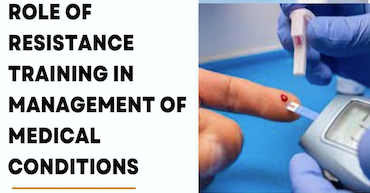
Introduction
Medical professionals as much as fitness professionals and exercise therapists need to remind themselves Resistance or Strength Training (RT) is well known for not only for creating stronger muscles and bones but according to a review of studies published in (February, 2022), by the British Journal of Sports Medicine RT is associated with a 10% to 17% lower risk of premature death from all causes, including heart disease, diabetes, and cancer. It’s the latest of many studies to show a connection between strength training and good health. Muscle weakness is common in these special populations and, consequently, makes them highly receptive to the benefits of RT.
What is Resistance Training?
Simply, Resistance Training is physical training that involves lifting “weights”. Now, these weights may be of two categories –
- Body weight resistance
- “WEIGHT” Training which is exercise with body weight AND some external Resistance in the form of “free weights” such as barbells and dumbbells and / or “pulley and cable” devices popularly known as “machines”.
Adaptations and Underlying Principles
Resistance Training – hereinafter referred to as “RT” – offers the ADAPTATIONS as listed below.
- Physiological Adaptations include
- Increased strength
- Endurance increases for a higher power output
- There is an increase in the force production maximal rate
- Plyometric ability
- Anaerobic power has an increase
- Increases are shown in fibre size
- There is a decrease or no change in our capillary density
- There is a decrease in the density of mitochondria
- ATP stores increase
- The body increases its stores of Creatine Phosphate
- The body increases its stores of glycogen
- Our body fat percentage decreases
- Our percent of lean body mass increases
- Neural Adaptations
- Anaerobic training is known to bring changes to the neuromuscular chain. This starts in the higher brain centres and continues to the muscle fibres individually.
- The motor cortex activity will increase when force levels increase and also when we learn new movements.
- Neuromuscular Reflex Potentiation: Anaerobic training enhances this reflex. The magnitude and the rate of force development go up.
- Motor Unit adaptations
- Maximum power and strength will increase in the agonist muscles due to increased recruitment, synchronization, and firing rate, or a combination of these.
- During RT, the muscle fibres become larger because they are recruited based on their size. They are recruited consecutively in order. Advanced athletes may recruit in different orders due to adaptations.
- Anaerobic Training and Electromyography Studies
- Increasing EMGs show greater neural activation.
- Some studies have strength and power increases showing as much as 73%.
- Training advancements give further gains in power and strength.
- A big dramatic increase happens early in the training programs.
- Some additional findings include:
- Cross-education: this is where a muscle undergoes resistance training solely on one side and the resting muscle on the other side sees some similar benefits.
- Bilateral deficits in people who are not trained: Force production is lessened when working together than the sum they would produce if they contract unilaterally.
- Muscular Growth
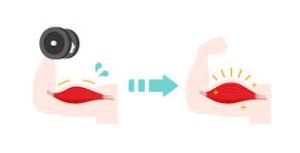
-
- Muscular hypertrophy refers to the enlargement of muscles due to increases in the cross-sectional areas.
- Hyperplasia is an increase in muscle fibre numbers due to the longitudinal splitting of the fibres. Hypertrophy results from increases in myosin and actin in the myofibrils and increases in the myofibrils contained in muscle fibres.
- The main adaptations that occur in skeletal muscle are increased size, fibre type transitions, and enhanced biochemical components. These changes give us more strength, power, and endurance.
So, what’s the link here?
Personal trainers and rehab specialists must remind themselves that RT stimulates many body reactions that protect us against chronic disease.
People with chronic diseases, need to exercise. Exercise can help them cope with symptoms and improve their overall health. These chronic conditions include heart disease, diabetes, depression, or back or joint pain.
- Arthritis. RT can ease pain, build muscle strength around joints and lessen joint stiffness. It also can help people with arthritis move better and improve quality of life.
- Back pain. Low-impact aerobic exercise combined with anaerobic exercise – now known as Exercise to Music or E2M – Is regular exercise that raises heart rate without putting stress on the body. It can build back strength and make muscles work better. Core-strengthening RT exercises certainly relieve symptoms by strengthening the spinal muscles.
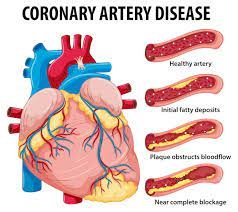
- Conventional cardiac rehabilitation programs. Since the 1980s RT has been accepted as a major component of rehab exercise for patients eligible for conventional cardiac rehabilitation programs. Numerous studies prove the efficacy of RT in the period of six to 12 weeks after hospital discharge with the average patient being clinically stable with a functional capacity of ≥ 5 METs. Since the late 1990s, in timelines starting within 3 weeks post-hospital discharge and lasting up to 3 months similar progress has been recorded. Regular RT lowers the risk of dying of heart disease. It most certainly lowers the risk of heart disease getting worse.

- Cancer. RT can improve the quality of life for people who are surviving cancer. It also can improve fitness. It reduces the risk of dying of breast, colorectal and prostate cancers. Increasing exercise especially RT has been shown to exert a primary preventative effect on two cancers—breast and colon cancer. Moderate exercise of as low as 4–5 METs (e.g. brisk walking), is required to achieve this effect. Exercise is associated with a 20–30% reduction in the incidence of breast cancer in women, and a 30–40% reduction in the incidence of colon cancer in both men and women. “In those patients already diagnosed to have one of these cancers, exercise reduces the likelihood for cancer recurrence and reduces risk from cancer death by as much as 26–40 %.”
- Depression and anxiety. Regular exercise helps lessen the symptoms of both these conditions. RT has a therapeutic effect on the treatment on multiple types of depression, including seasonal, bipolar, post-natal, pre-menstrual and major depression. A combination of RT with psychotropic medications achieves better treatment results than the medications alone. The effect of RT on depression is on a systemic level as well as a direct effect on central nervous system (CNS) function. It appears to increase serotonin, adrenocorticotropic hormone (ACTH), endorphins, and endocannabinoids within the CNS. On a systemic level, exercise increases norepinephrine and reduces cortisol, tumor necrosis factor (TNF), and interleukin-6.
- Diabetes. Regular RT can help lower blood sugar levels. It also helps control weight and boost energy. For Type 2 diabetes patients, RT can lower the risk of dying of heart disease. Exercise is valuable in both the primary and secondary prevention of diabetes mellitus. Both aerobic and RT exercise reduce the likelihood of developing type-2 diabetes mellitus. “For every increment of 500 kcal of energy expended per week, there is an associated 6% reduction in the likelihood of type-2 diabetes. In patients already diagnosed to have diabetes mellitus, walking two hours per week is associated with a 39–54% reduction in all-cause mortality from diabetes mellitus, and a 34–53 % reduction in mortality related to cardiovascular disease.” The mechanisms by which RT benefits diabetes relate to the fact that exercise increases glycogen synthetase and hexokinase activity [4]. Exercise reduces GLUT-4 protein and messenger RNA expression and increases muscle capillary density, which helps improve glucose delivery to the muscle.”
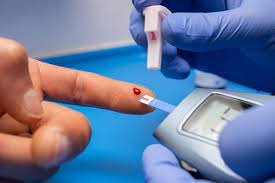
- Osteoporosis. This condition causes bones to thin and weaken. Some exercises, such as fast walking and lifting weights, help build strong bones and slow bone loss. RT directly helps in the strengthening of the periosteum.
- Impact of RT on Aging. RT provides powerful health benefits for quality of life, physical function, and independent living throughout the life cycle. Exercise slows the aging process. Studies have shown that even in the presence of pre-existing medical conditions like hypertension, chronic obstructive pulmonary disease (COPD), diabetes, smoking, high body mass index (BMI), and hypercholesterolemia, increasing RT and exercise in general has a dose-dependent effect in decreasing relative risk of death. “Exercise exerts a positive influence on both a cellular level and at the level of organ systems.
RT – frequency and intensity
CAVEAT: Before starting to exercise, talk to your medical doctor about how long and hard to exercise. It is imperative that the fitness pro or exercise therapist teams with other specialists in the field, not just the client’s medical care giver, but for example the physiotherapist and nutritionist.
How much strength training is necessary?
A 2022 review suggests that 30 to 60 minutes of weekly RT leads to the highest number of benefits – a conclusion that aligns with the recommendation in the Physical Activity Guidelines for Americans.
RT is based on scientific principles of –
- Individual Differences
- Overload
- Over or Super Compensation

4. Specificity
5. Specific Adaptation to Imposed Demands
6. General Adaptations to (exercise) Specific Syndromes
7. Use – Disuse
There are some more principles that govern the periodization of Exercise into macrocycles which comprise a series of mesocycles and which in turn comprise day-to-day microcycles. Of course, the fundamental principle that must be followed inn RT – as in all other Exercise formats – is this: do not exercise a muscle or a suite of muscles if the delayed onset of muscle soreness – DOMS – persists.
Hitherto, guidelines for optimal health had a singular focus on aerobic fitness. But in the last 30 years, a significant shift has occurred with the inclusion of the concept of musculoskeletal fitness. Simply put: health status can improve due to exercise or physical activity in the absence of changes in aerobic fitness.
There is lots more to discuss, inter alia, the concepts of Non-Exercise Activity Thermogenesis (NEAT), Continuous Versus Interval Exercise, Exercise in the Intensive Care Unit but constraints of space for this article do not allow this luxury. I will certainly discuss these in forthcoming blogs.
Recommendations for Public Health
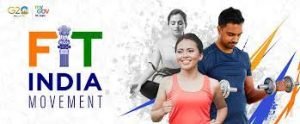
The Fit India Mission’s Fitness Protocols and Guidelines (P & G) for Ages 5-18 years, 18-64 years and 65 years and above offer a holistic approach to physical activity and physical fitness. They confirm the WHO’s position:
- Adults should do at least 150 minutes to 300 minutes of moderate intensity aerobic physical activity, or do at least 75 to 150 minutes of vigorous-intensity aerobic physical activity, or an equivalent combination of moderate and vigorous-intensity activity throughout the week for substantial health benefits;
- Adults should also do muscle-strengthening activities at moderate or greater intensity that involve all major muscle groups on 2 or more days a week, as these provide additional health benefits.
In the coming years, on the basis of pan India data, Fit India Mission ought to accurately differentiate between moderate and vigorous intensity of physical activity. Moderate intensity is defined by a 3 to 5 MET level of effort and includes activities that slightly increase breathlessness and heart rate (e.g., walking 6 to 7 kms per hour). Vigorous intensity is defined by ≥6 METs – activities causing large increases in breathlessness, heart rate, and sweating (e.g., including jogging at faster than 10-minutes for 1500 meters, aerobic dancing, etc.)
The particular dose of exercise required to achieve benefits with regard to a particular disease process is difficult to ascertain but efforts must be made in this regard with the help of data analytics.
Fitness Centres and education institutions should be encouraged to follow the principles of exercise periodization and also contribute data to a centralized states-wise agency for onward analysis.
We at GĀYO FITNESS ACADEMY have been conducting organized, structured research studies on cohorts of T2D, Coronary Artery Disease and Lower Back Pain in partnership with the medical fraternity. Our senior alumni are the cutting edge of the project – they are the trainers and monitors of progress their clients (patients). They are providing therapeutic training through the following modalities:
Resistance Training –
-
- both weight training and
- body weight training
- Psychological Modalities
- Diet Management
- Nutrition Management
- Alternative Therapies
- Application of Biomechanics
We will take up each of the above training technologies in subsequent blogs.
Conclusion
India’s burgeoning population has its significant share of special populations. If India wants to unleash the power of its young population, the quality of health and fitness will need to be improved. It is here that fitness professionals including exercise therapists learn to become aware of their potential and unleash the power of their skill sets – through teamwork!
♦♦♦♦♦
[/vc_column_text][/vc_column][/vc_row]
Leave a Reply
You must be logged in to post a comment.
